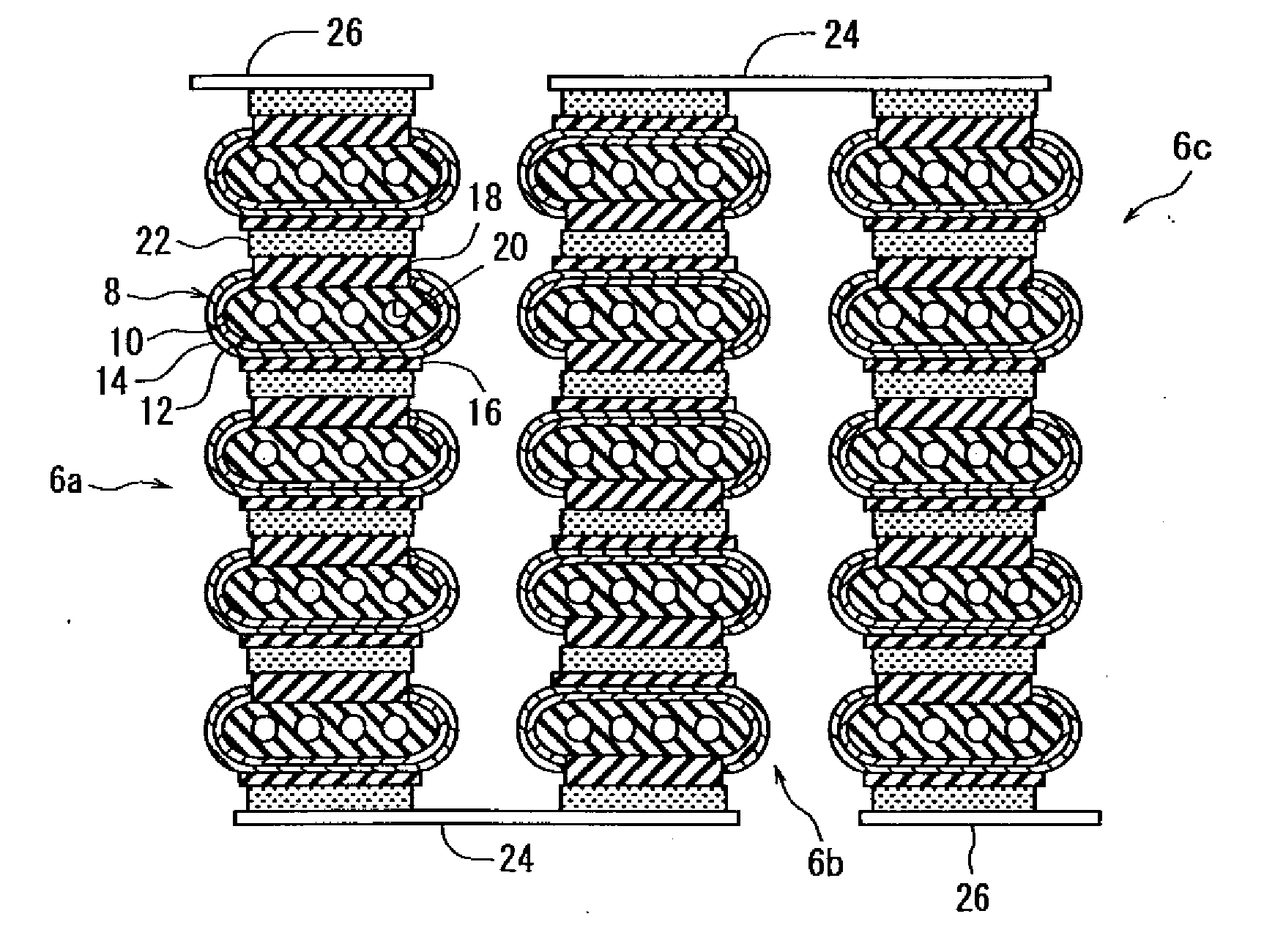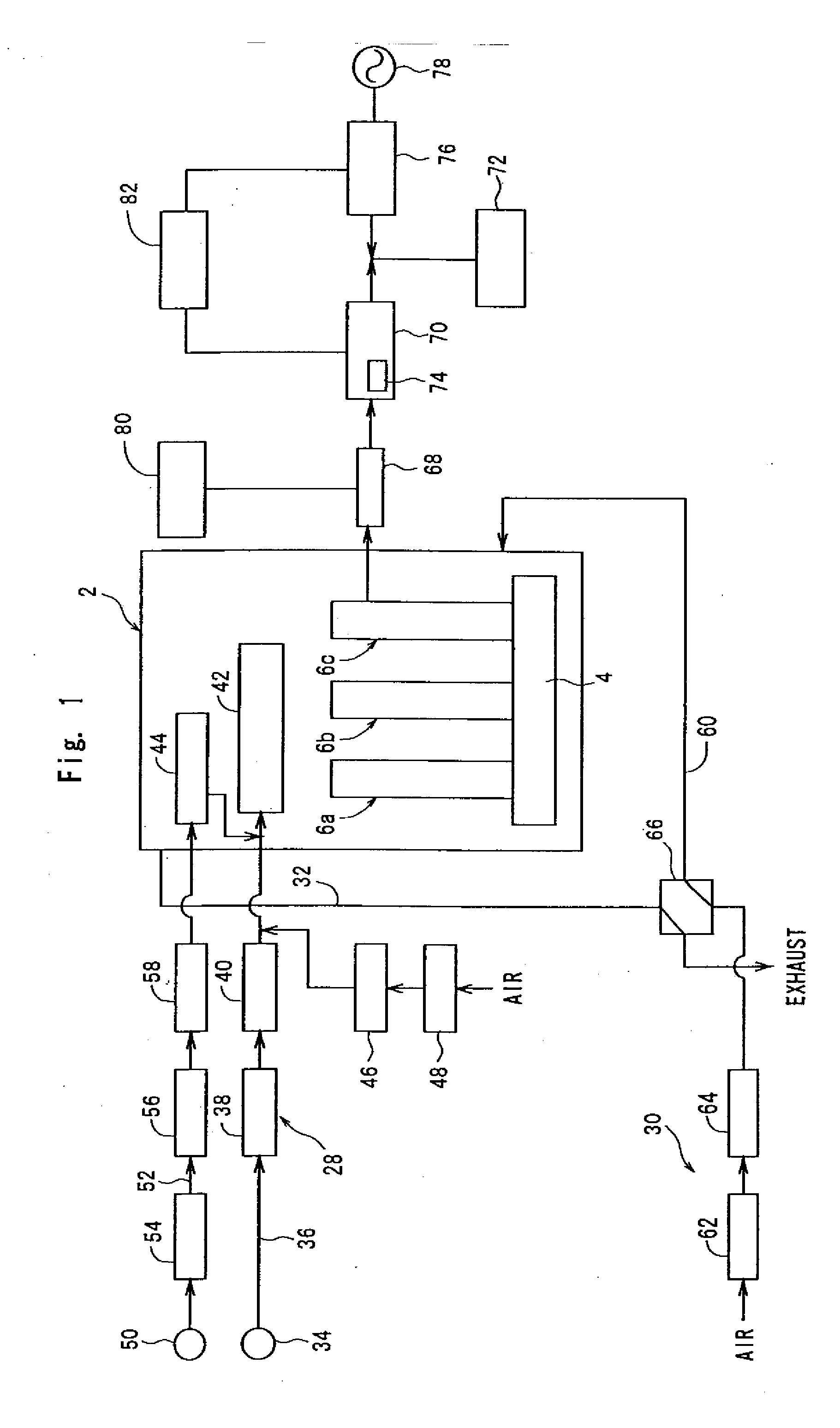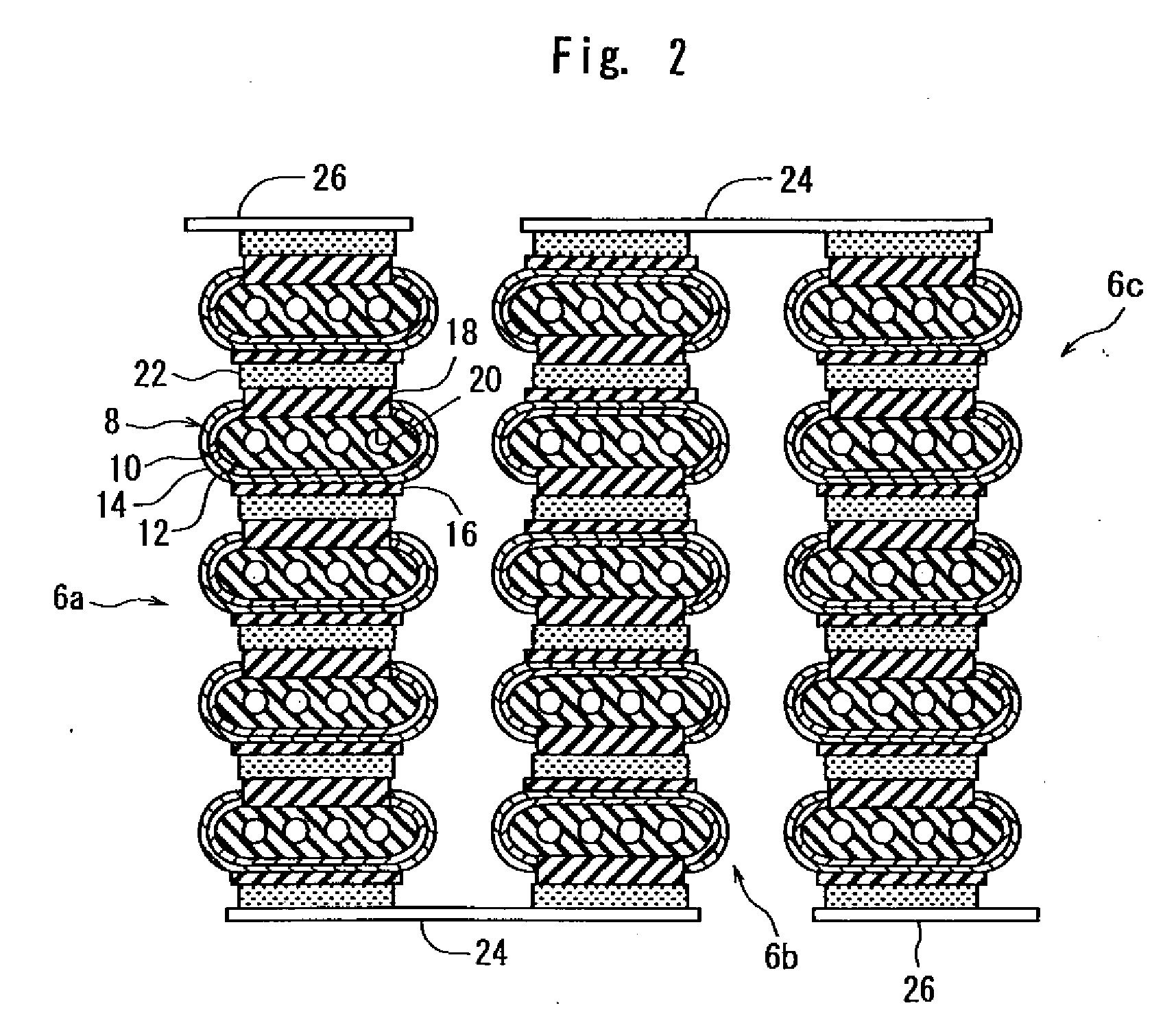Fuel Cell System
a fuel cell and system technology, applied in the direction of fuel cell control, electric generators, doors/windows, etc., can solve the problems of fuel gas short supply, fuel gas insufficient supply, fuel depletion phenomenon, etc., and achieve the effect of quick control of output power
- Summary
- Abstract
- Description
- Claims
- Application Information
AI Technical Summary
Benefits of technology
Problems solved by technology
Method used
Image
Examples
Embodiment Construction
[0017] A preferred embodiment of the fuel cell system constituted according to the present invention will be described below in further detail with reference to the accompanying drawings.
[0018]FIG. 1 simply illustrates the principal constituent elements of the fuel cell system constituted according to the present invention. The fuel cell system that is illustrated includes a generation chamber 2 which may be of a rectangular parallelepiped shape. It is desired that the generation chamber 2 is constituted by an outer frame made of a heat resisting metal plate and a heat insulating member arranged along the inner surfaces of the outer frame. A fuel gas tank 4 of the shape of a box is arranged in the lower part of the generation chamber 2. Fuel cell stacks 6a, 6b and 6c are arranged on the fuel gas tank 4. If described with reference to FIG. 1 as well as FIG. 2, the fuel cell stacks 6a, 6b and 6c are, respectively, constituted by a plurality of (five in the illustrated embodiment) fue...
PUM
| Property | Measurement | Unit |
|---|---|---|
| temperature | aaaaa | aaaaa |
| temperature | aaaaa | aaaaa |
| flow rate | aaaaa | aaaaa |
Abstract
Description
Claims
Application Information
 Login to View More
Login to View More - R&D
- Intellectual Property
- Life Sciences
- Materials
- Tech Scout
- Unparalleled Data Quality
- Higher Quality Content
- 60% Fewer Hallucinations
Browse by: Latest US Patents, China's latest patents, Technical Efficacy Thesaurus, Application Domain, Technology Topic, Popular Technical Reports.
© 2025 PatSnap. All rights reserved.Legal|Privacy policy|Modern Slavery Act Transparency Statement|Sitemap|About US| Contact US: help@patsnap.com



